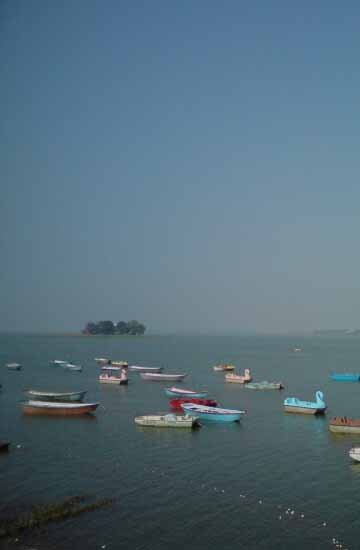Sanchi is known for its Stupas, monasteries, temples and pillars dating from the 3rd century to the 12th century. The most famous of these monuments is the Sanchi Stupa 1, which was originally built by the Mauryan Emperor Ashoka, the governor of Ujjayini, whose wife Devi was the daughter of a merchant from adjacent Vidisha. Their son Mahindra and daughter Sanghamitra were born in Ujjayini and sent to Srilanka, where they converted the King, the Queen and their people to Buddhism. Sanchi in Madhya Pradesh is located 46 kilometers away from Bhopal it is also known as the World Heritage Site.
Sanchi has a strong Buddhist heritage also. Tourism in Madhya Pradesh receives a momentum with a tour to Sanchi that also reveals testimony of Gupta architecture besides the Buddhists ruins.
They are the only site that can be verifiably associated with a Gupta period monarch from its inscriptions. One of India's most important archaeological sites, the Udayagiri hills and its caves are protected monuments managed by the Archaeological Survey of India. They contain some of the oldest surviving Hindu temples and iconography in India.
The Udayagiri Caves are twenty rock-cut caves near Vidisha, Madhya Pradesh from the early years of the 5th century. Udayagiri caves contain iconography of Vaishnavism (Vishnu), Shaktism (Durga and Matrikas) and Shaivism (Shiva).They are notable for the ancient monumental relief sculpture of Vishnu in his incarnation as the man-boar Varaha, rescuing the earth symbolically represented by Bhudevi clinging to the boar's tusk as described in Hindu mythology. The site has important inscriptions of the Gupta dynasty belonging to the reigns of Chandragupta II (c. 375-415) and Kumaragupta I (c. 415-55).
In addition to these, Udayagiri has a series of rock-shelters and petroglyphs, ruined buildings, inscriptions, water systems, fortifications and habitation mounds, all of which remain a subject of continuing archaeological studies. The Udayagiri Caves complex consists of twenty caves, of which one is dedicated to Jainism and all others to Hinduism. The Jain cave is notable for one of the oldest known Jaina inscriptions from 425 CE, while the Hindu caves feature inscriptions from 401 CE.
There are a number of places in India with the same name, the most notable being the mountain called Udayagiri at Rajgir in Bihar and the Udayagiri and Khandagiri Caves in Odisha.
Gyaraspur was of considerable importance in medieval India. Gyaraspur is a town in the Vidisha district, Madhya Pradesh, India. The place has several ruins of several old Hindu, Jain and Buddhist places of worship. These include Maladevi Temple, Hindola Torna and the Bajramath Surya Temple.
The extensive ruins, scattered in and around Gyaraspur in the late ancient and early medieval times. These ruins indicate that the place has passed through the influence of Buddhism, Brahmanism and Jainism. Located on a huge platform cut out of the hillside and strengthened by a massive retaining wall, Maladevi temple is in fact an imposing and stupendous building. The temple was originally dedicated to some goddess and it was subsequently appropriated by the Jains.
Hindola Torna is one of the 'Toranas' or ornamental entrance arches leading to a large temple either of Vishnu or of Trimurti. All the four sides of the two lofty pillars are carved into panels with insets of the ten incarnations of Vishnu.
The bajramath is a fine example of a very rare class of temples with three shrines or cells placed abreast. All these shrines now occupied by Jain idols belonging to the Digambara sect. Originally these shrines sheltered the Hindu Trinity. More precisely the central shrine was dedicated to Surya, the southern to Vishnu and the northern to Siva.


